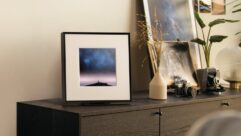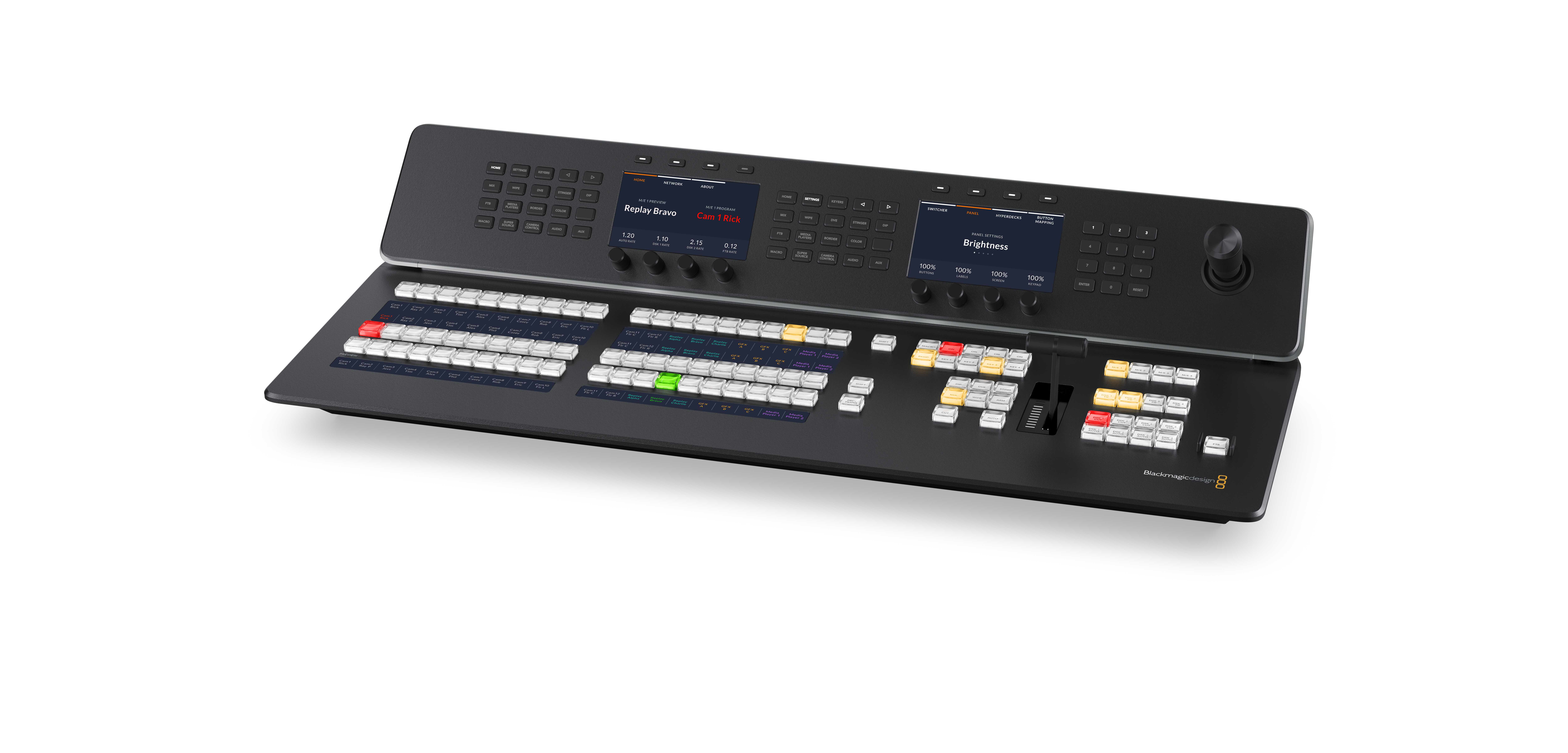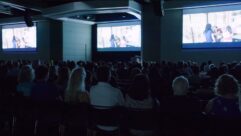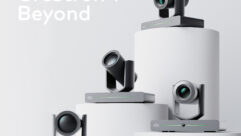
Church Reaches New AV Heights, Part 1
Apr 21, 2010 10:59 AM,
By Bennett Liles
Listen to the Podcasts
|
Editor’s note: For your convenience, this transcription of the podcast includes timestamps. If you are listening to the podcast and reading its accompanying transcription, you can use the timestamps to jump to any part of the audio podcast by simply dragging the slider on the podcast to the time indicated in the transcription.

Heights Baptist Church
The Heights Baptists Church in Richardson, Texas, features some of the top names in musical performance and its services offer music that sets the spirit on fire. The church’s recent massive AV upgrade was a challenge, and Technical Director Bobby Dennis is here to tell us how the whole plan was crafted.
Related Links

Church Reaches New AV Heights, Part 2
The Heights Baptists Church in Richardson, Texas, is home to some of the most high-energy praise music around and matching the caliber of the performers with professional level sound, lighting, and video on a budget is no small task. Technical Director Bobby Dennis is here to finish his story on how it all came together….

National Association of Church Facility Managers (NACFM)

Episode One: The Electric Church
In the 1960s, the Electric Church was a movement (popularized by Jimi Hendrix and others) wherein electric music emphasized feelings and emotions in the listeners as a means of encouraging spiritualism. …
SVC: Bobby, I really appreciate your being here with me for the House of Worship AV podcast. And we are talking about the Heights Baptist Church out there in Richardson, Texas. And that sounds like a really jiving, jumping place. I mean, that doesn’t sound like they are doing too many of the old monotone dirges in that church.
Bobby Dennis: You know, that is not really our style. I mean there is room for that. Everyone has different worship styles they like, but that is not typically the style that you will find here.
What exactly is their style? There seems to be a lot of live music.
You know what? Music is an incredibly important part of our worship services. Each week and each Sunday, we have two different services: one that’s 9:15 in the morning and one that’s 10:50. The 9:15 is what’s referred to as a “blended service”. I mean, you will hear some traditional music. It does have a choir, an orchestra, a praise team, a rhythm section, but also, they do a lot of more updated material in that service too. Now, the 10:50 service is a contemporary service; there is no choir, no orchestra, no praise team. Actually there is a regular band that does that one; the name of the band is Dutton, and they’re a five-piece group and they lead worship in the second services, and it’s a very high-energy service, but both of them are very upbeat. [Timestamp: 2:08]
OK. Is this something that, say, evolved from a more traditional thing or have they been doing this for a good while now?
You know what, here at the Heights, the church has been around for some time here in the Richardson area, but starting with the new worship center, which we moved into, I guess it’s been five years ago now, is when they divided the styles of the service up. Now, prior to that, they had already transitioned into what you would refer to as a blended service, but about … four or five years ago is [when] they implemented two distinct styles of service and added the contemporary, but it’s always revolved around a real strong emphasis in the worship set of the service on music and music that would appeal and minister to the particular crowd that was attending that service. [Timestamp: 2:56]
And what’s the size of their congregation there? … I went on their website, and it looks like a fairly young crowd. Of course, I was looking at the music performances.
The core of the membership there is about—gosh, I haven’t even looked at the latest numbers—probably around 5,600 membership. On a given Sunday, we have attendance that will be somewhere around 3,500 between the two services. The core of the congregation is in that latter [service], later 20s, early 30s thru later 40s; that’s the largest segment. We really have a huge predominance of young families—lots of children on the campus. [Timestamp: 3:36]
Well, that in itself is going to be a challenge, along with a lot of live music, because that’s really hard to do and make it sound right if you don’t have the technical talent. Do you use all volunteers, or do you got some pros on there that are full-time?
Bennett, the only full-time staff that we have that are involved from a technical prospective is myself, and I am technical director. On Sunday services, I actually mix front-house audio. My partner is, by title, the media director. Now, he really covers our web content and graphic creation, but [he] also does the creative element in videos. He oversees the video production room during the services. The remainder of the crew is volunteer. [Timestamp: 4:21]
OK, so that’s kind of an ongoing thing then. I guess you are constantly training people to some extent.
We really are, even the ones that have been with [us], and we’re very fortunate. We’ve got such a dedicated group of volunteers. Many of them have been doing this as long as we’ve been doing this here in this facility. So they have grown up with it and matured, and we do constantly recruit additional new volunteers and thus the ongoing training. But we can really pull in; it doesn’t always have to be me or Shawn, the media director, doing the training because a lot of our lead and longer-term volunteers, they step up to the plate and they do training of the young guys also. … At our student ministry level, they have their own venue on the campus called “The Brick.” It’s about a 400-seat venue, and we start training the volunteer crews because the student ministry staffs and crews their own events also. So it’s sort of a foreign team in a way. [Timestamp: 5:19]
OK, so tell me about this installation. When did this all happen and what was the goal behind it all?
Well, the most recent part of it is we were trying to upgrade our video facilities, quite candidly, when the new worship center that we are in now was envisioned several years ago. The budget that they came up with, they wanted to be as frugal and realistic as possible, but at the same time, they didn’t want to tie our hands and they wanted to incorporate growth potential into that. Well, the initial budget (which this is before I came onboard), from the stories that I have been told, was not enough really to 100 percent adequately cover video, lighting, and audio. And me being an audio guy, I am certainly happy that it worked out this way: The main emphasis of that original budget was concentrated on audio as an install, so we had adequate video and adequate lighting, but it had really been scaled back and what we’ve done in the year since we have moved in is try to have a plan of progress to increase and enhance the capabilities in each of those. Most recently, that’s the video element of this. … Almost a year ago now, our senior pastor came up to me and—this is, to me, kind of a funny story—he had just gotten an HDTV set at his house. And he came up and he said, “Bobby, why do our screens not look quite as good as my TV at home?” And that took more explaining than really he wanted, lots more details than he wanted. But bottom line, he said, “I really would like to see if it makes economic sense for us to upgrade our video capabilities.” And he asked me for some prices and I gave him some ballpark prices and he said, “Well, we better make this a transitional process.” So we’ve kind of built a plan and are into what we call “phase two” of it. The first step was we added new cameras; the second phase of it, we brought in the switching, and what we’ve done most recently, which is when we brought in the new For-A HVS-300HS switcher which has made all the difference in the world. [Timestamp: 7:37]
Church Reaches New AV Heights, Part 1
Apr 21, 2010 10:59 AM,
By Bennett Liles

Why did you, particularly, choose that one?
I had read about it and saw it at one of the tradeshows and looked at several other alternatives that I felt would fit into our budget range. It had a great combination for us. It had a well-founded company that has a great track record. It fit in our budget range and when I saw it and compared [to other units], I liked the way it looked and I don’t mean cosmetically [but] the system itself. The output of the system was just as good as anything that I could afford and particularly their multiviewer was incredible. The clarity and quality of the multiviewer was, in my opinion, as good as it gets, but the bottom line, since we mainly deal with volunteers, I couldn’t pick just anything. I had to pick something that I thought the volunteers could adapt to real easily because 90-plus percent of our crew each Sunday is volunteer operators. The For-A, the more I looked into it and when we auditioned some other gear from other manufacturers that was incredibly good quality, the For-A just came out on top as far as the ease of use and what I perceived as ease of training. Now that’s proofing out. We brought [it] in when it was first brought online. One of the factory people came in, one of their sales reps came in, and did a 2-hour training session with our video crew and that was it. They took it and ran with it two days later for four different services and a major event that evening without a glitch. Now part of this is because we have some really great guys on our crew. None of them are professionally involved in video outside of church, but they just work at it and they’ve learned it and understand it. But, also, kudos to For-A. This switcher is incredibly intuitive. [Timestamp: 9:34]
And you’re using, I guess, more than one video format?
We do, because at this phase, our projectors are not HD, so we are taking HD up to this point. Everything that we do is 16×9 format, but the switcher is mainly used for live. I mean, we do live switching for IMAG coverage out in the auditorium. But, obviously, we have to take it down to get to the SD projectors that we use, but also, it feeds our campus TV sets which is a little more archaic but adequate for our needs right now in that it’s SD modulated to an MA TV system throughout the campus. [Timestamp: 10:13]
OK, and what are you doing, have you got graphics like up on the screen during the service and everything?
Yes, we do. IMAG out there is not only used for live image, but we do lyrics—project lyrics—during the worship set. Now sometimes those are over moving backgrounds, you know, jump backs or sometimes they’ll set up live shots that the image is over or PRI, preservice and postservice. We’re running promotional pieces, for lack of a better term, advertising for upcoming events, or reminders to the congregants about things that are happening on the campus or time changes that they need to know. It’s pulling double and triple duty sometimes. It’s not just doing the live event. [Timestamp: 11:01]
Yeah, and it’s a challenge, I guess, to make it look easy, what you’re doing just on the screens in the sanctuary, I mean, when the people are out there.
It can be a challenge.
Yeah, especially, when you are training people all the time, like you said, it’s got to be easy enough to do but look pro at the same time. So what kind of cameras did you get in there and I guess these are used not only for services but for other events too?
We do concerts like any other church does and then special conferences and events like that. Once again, in our budget range, I chose something that would give me an image that was a visual upgrade. I mean, [it] would be obvious to anyone walking into the room as far as the congregants are concerned. But to be real honest, I was less concerned about bragging rights on the cameras as opposed to quality versus money spent.

What we chose was something you seldom would see in this particular use, probably, and that’s the Canon XL H1S. It has a good image; it’s a good price point for us; does not have the capability of CCU control, but we didn’t anticipate implementing that, particularly within our budget range and that requires an additional volunteer. We got the S version of it, so we did have HD/SDI output and genlock sync for it also. So we’ve got four of those that are manned and then we’ve got one—and we hope to grow in this also—one Sony BRCZ700 remote camera, and we did have that with the HD/SDI option also. [Timestamp: 12:37]
Well, it sounds like you’re really sort of targeting these things the way you should be, as far as working the volunteers and giving the professional look. Now, you mentioned recording these things, how are they recorded?
We still archive everything on DVD. That’s the way it has been up to date and that’s in the foreseeable future what we record on. We’ve got two Datavideo MP-6000s. One of them records everything: worship, sermon, everything for both services each Sunday morning or at a concert—it records everything. The second MP-6000, for our regular services, is only used to record a separate DVD for the 9:15 sermon and a separate DVD for the 10:50 sermon. Those DVDs are used to upload for a web delivery the afternoon after the Sunday that they air. So that’s our format of recording right now. We have one additional Sony DVD recorder that we use occasionally for ISO camera records. [Timestamp: 13:41]
OK, I was going to ask about that, if you just recorded a straight line feed for everything?
Well, we do on that one DVD, and what we use it for is a lot of the events like a children’s event—like a children’s musical or something. There is a combination of animated graphic content that may come with the particular musical they are doing, plus obviously parents want to see their kids up on the screen. Well, since you are switching back and forth between those, we would like to have something that was a static shot of the stage that’s always the kids singing, so that’s another advantage that we had that we didn’t have before with the For-A switchers. We used one of the aux busses and do a dedicated camera feed to this one DVD recorder and that gives us something that we can set always to be live as opposed to switching, the IMAG feed being recorded; which is going to switch between graphics and live content. [Timestamp: 14:38]
Well, that’s enough to keep you on your toes; that’s for sure. Sounds like you have a lot going on.
Sometimes I am glad I am working out front and not back here.
Well, that’s going to be good. In part two, we are going to get into kind of what’s your bag and that’s the audio stuff but for right now. I really appreciate you being here for part one and filling us in on that, and we’ll go into audio and intercom and all that stuff and how you kind of take us through a routine service on this thing. I really appreciate you being here for part one. Thanks very much, Bobby.
Wonderful, look forward to part two.










